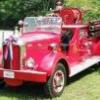First step is to ensure the brake shoes are adjusted properly. Jack it up and adjust each wheel to ensure the shoes are just clearing the drums. That may be all that is needed. Always keep in mind the purpose of bleeding is to get the air out of the lines. Air will collect in the high points of the system, so that is why you bleed the upper wheel cylinders, the lower will "self" bleed through the upper wheel cylinders. Make sure you use a flare nut wrench or six point socket to loosen the bleeders to keep from rounding them off. If the bleeders are rusty spray them with a penatrating oil first and let them sit for a while before trying to loosen them. You will need to start at the master cylinder. Make sure it is full of fluid and make sure you keep it full during the bleeding process. Loosen the brake line as it leaves the MC, place a catch container under it, and have a helper slowly depress the pedal. If air bubbles come out, tighten the nut, have the helper release the pedal, and repeat until the air is bled out. If you are chasing air that was introduced into the system accidently it is helpful to remove the line going into the part at each location on the truck and block it off with a home made plug. Pump the MC and if it holds pressure the air is beyond the point you are at. If it doesn't hold you need to bleed the line before re-attaching it. Check for pressure, etc. Next go to the booster. There is a bleeder on the booster master cylinder; bleed it the same way as the master, except it is helpful to place a clear hose over the bleeder outlet to direct the fluid to the catch jar. You can watch for air bubbles in the clear hose. Next go to the furthest wheel from the MC, probably the right rear. Then bleed the upper wheel cylinder. Go to the left rear next, repeat, front right, repeat, front left, repeat, all the while making sure you do not let the MC run out of fluid. After a couple of attempts to bleed each point is helpful to pump the pedal with all bleeds closed to see if you have removed all of the air yet. If done correctly the pedal will not need to be pumped in order to develop pressure.

